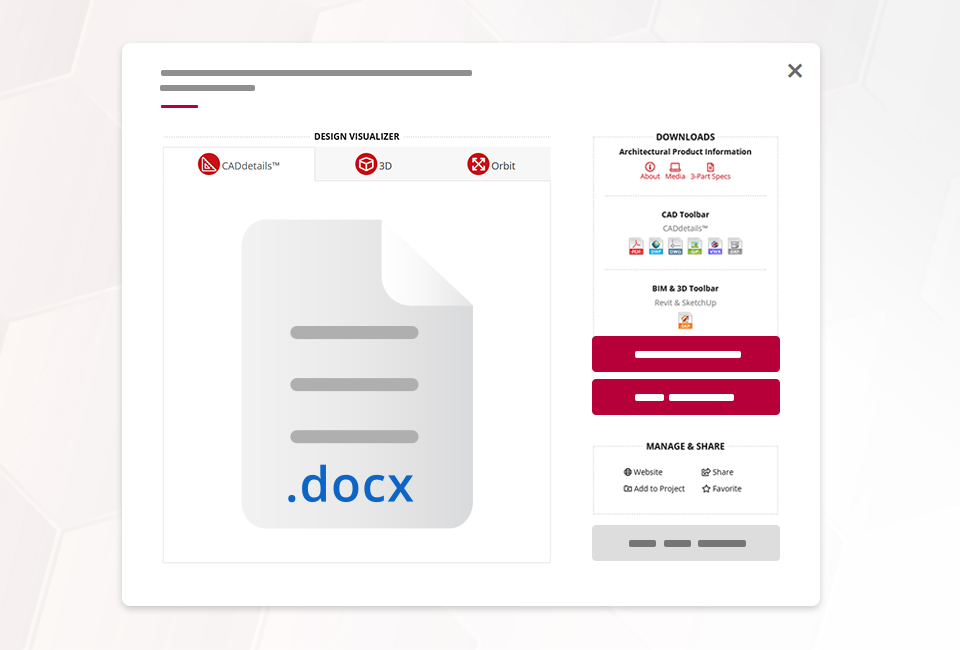Manufacturers offer 3-Part specifications to make it easier to specify their products. Well-written specifications save design teams time, and that can make a significant difference in which products get specified. Most manufacturers recognize the benefits of offering 3-Part specifications. This is because well-written specifications communicate design information in a familiar format for the design community, make it easier for manufacturers’ products to be included in a construction project manual, and provide manufacturers with a competitive advantage.
One of the first decisions that must be made is how many specification sections need to be written to cover all of a manufacturer’s specifiable products. How to best organize product information into specifications is not always clear-cut. Should manufacturers have all of their products in a single specification? Should they instead offer a document per product or product line? Different factors, such as the types of products manufactured, the available product lines, and how the manufacturer presents their product information to designers, play into decisions on how to structure their collection of specifications.
Guide Specifications or Product-Specific Specifications?
There are two paths for manufacturers' written 3-Part specifications; guide specifications, and single product-specific specifications. They are referred to as “guide specifications” because they quite literally guide designers through the required product options and choices. Guide specifications are set up with notes to the specifier or architect that draw attention to various decisions that need to be made when preparing specifications for a specific construction project. In addition to specifier notes, square brackets are also used to call attention to specific options such as finishes, colors, and fabric selections. Specifier notes and square brackets are standard ways to communicate options in Guide Specifications according to the CSI and CSC recommendations, and design teams are accustomed to their use.
The more product types, collections, and product options available, the more likely they should have Guide Specifications. For example, a manufacturer of three wall cladding product lines may offer several different materials and finishes for each line. All of these options can be included in a single guide specification section. For the guide specification to be effective, it should be easy to read and use and adhere to PageFormat™ as recommended by the CSI and CSC.
If a manufacturer offers only a single product with no variations or options, the guide specification concept would only apply to a preamble and potentially other articles that may require editing. Part 2, which covers product information, would be straightforward and require little to no editing. This offers an appealing simplicity, and some manufacturers opt to have specifications written for each product even when they have hundreds of products. This approach has disadvantages associated with it. Managing hundreds of files can be difficult, not just for the manufacturer but for designers as well. As updates to products and MasterFormat® are released, updating hundreds of documents is cumbersome.
Most architectural firms maintain their own office master specifications. These specifications can be used over and over in multiple projects. If manufacturers provide architects and design professionals with well-written 3-Part guide specifications, they may end up incorporated into an office’s library of office master specifications and used by multiple designers in a range of projects. If a manufacturer has a vast product offering detailed within their guide specification, all of those products become part of the firm's office master specifications. On the other hand, if a manufacturer provides only specifications tailored to a single product, its usefulness in a master specification library is limited, and the chance to create opportunities for the specification of other products has been lost.
A Note About MasterFormat® and The Number of Guide Specifications Required
Specifications are organized according to MasterFormat® within a project manual, with the MasterFormat® Section Number and Titles dictating the order of specifications. Manufacturers’ product specifications are typically assigned a MasterFormat® Section Number and Title that aims to represent how the products are used in a construction project. If a manufacturer makes products with different MasterFormat® Section Numbers and Titles, these products will require different guide specifications. For example, if a manufacturer produces both stone tiling and exterior stone cladding, these products would not be included in the same guide specification as they have distinct MasterFormat® Section Numbers and Titles. Stone Tiling is MasterFormat® Section Number (09 30 33), while exterior stone cladding is MasterFormat® Section Number and Title (04 42 00) according to MasterFormat® 2020, so these products must have distinct guide specifications.
CADdetails offers in-house specification writing services for building product manufacturers to ensure your specifications are project-ready. If you already have specifications, we can promote your quality specifications to over 656,000 architects and design professionals in North America. Book a call and get specified!
Cover image Ⓒ by CADdetails

